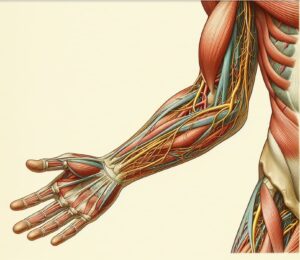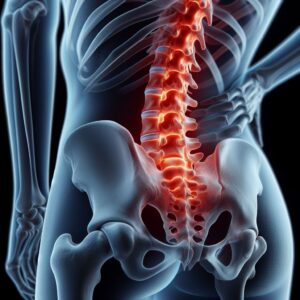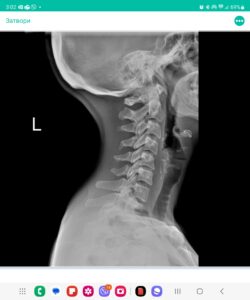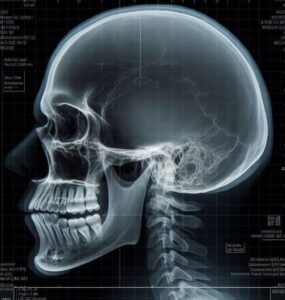
Dr. Petya Stefanova
Teacher
Assistant at the Faculty of Medicine at Sofia University and resident physician in Neurology at Sofiamed University Hospital.
Questions
Summaries
Videos
Audios
Case Steven Q13: When can the patient have his hip replacement surgery following an acute ischemic stroke and treatment with thrombolysis (tPA)?
August 3, 2024
Case Steven Q12: What is the appropriate secondary prophylaxis for this patient after an acute ischemic stroke?
August 3, 2024
Case Steven Q11: What actions should be avoided during the 24 hours following intravenous thrombolysis (tPA) administration?
August 3, 2024
Case Steven Q10: Thirty minutes after starting intravenous thrombolysis (tPA), the patient begins to lift his hand and shows improvement in his speech. What should be done at this stage?
August 3, 2024
Case Steven Q9: The patient, a 68-year-old male, presents with acute ischemic stroke symptoms that began 1 hour ago. His weight is 80 kg, and his height is 175 cm. His blood pressure is 185/90 mmHg, and his blood glucose level is 8 mmol/L. Based on these details, what is the correct dose of intravenous tissue plasminogen activator (tPA) to administer?
August 3, 2024
Case Steven Q8: The blood test results are normal, and the CT scan describes an ASPECTS score of 9, with a small hypodense zone in the left parietal lobe near the cortex, corresponding to the patient’s symptoms of right-sided weakness and slurred speech. What is the next step in the treatment choice?
August 3, 2024
Case Steven Q7: What tests should be ordered for this patient with acute onset right-sided weakness and slurred speech?
August 3, 2024
Case Steven Q6: For the patient’s symptoms of acute onset right-sided weakness (severe for the hand and mild for the leg) and slurred speech, what is the NIHSS score?
August 3, 2024
Case Steven Q5: The nurse reports the following parameters: blood pressure 185/90 mmHg, heart rate 80/min, sinus rhythm on ECG, blood oxygenation 91%, and blood glucose 8 mmol/L. Does any of these parameters require correction at this time?
August 3, 2024
Case Steven Q4: The patient is taking metformin, antihypertensive medications and immunotherapy for psoriasis. Is any of these drugs a contraindication for thrombolysis?
August 3, 2024
Case Steven Q3: Patient’s wife shares that symptoms started 1 hour ago. Patient is having type 2 diabetes, arterial hypertension, history of hepatitis B, glaucoma, mild hearing impairment, psoriasis, coxarthrosis, diabetic polyneuropathy, high cholesterol in his blood tests last year, COPD and he is smoking. Which of the following are risk factors for a cerebrovascular accident (stroke) in this patient?
August 3, 2024
Case Steven Q2: While the nurse checks the patient’s vital signs, what key questions will you ask the wife to gather essential information about the patient’s medical history and the event?
August 3, 2024
Case Steven Q1: It’s a typical busy Saturday afternoon in the emergency department when a 68-year-old male patient is brought in by his wife. The patient presents with a history of acute onset right-sided weakness, which is severe in his hand and mild in his leg. He also has slurred speech, which started one hour ago while he was having lunch with his family. You are the doctor who must assess the patient promptly. What are your first steps in assessing this patient?
August 3, 2024
Which nerve is responsible for the sneezing reflex?
March 22, 2024
What is the physiological response of the ANS during the “fight or flight” response?
March 16, 2024
Which cranial nerve is involved in parasympathetic innervation of the heart?
March 16, 2024
What is the role of the parasympathetic nervous system during rest and digestion?
March 16, 2024
Which neurotransmitter is primarily associated with the sympathetic nervous system?
March 16, 2024
What are the two divisions of the motor portion of the ANS?
March 16, 2024

Q 2.1. Peripheral Nervous System Disorders. Classification. Neuralgia, mononeuritis, plexitis. Treatment.
February 2, 2024
Fake Smiles, Real Damage: How Digital Joy Breeds Fear and Anger
May 3, 2025
Understanding Neuropsychological Evaluations: What to Expect
February 25, 2025
Невропсихологическо изследване – индикации, провеждане и резултати
February 24, 2025
Невропсихологическо изследване – индикации, провеждане и резултати
February 24, 2025



